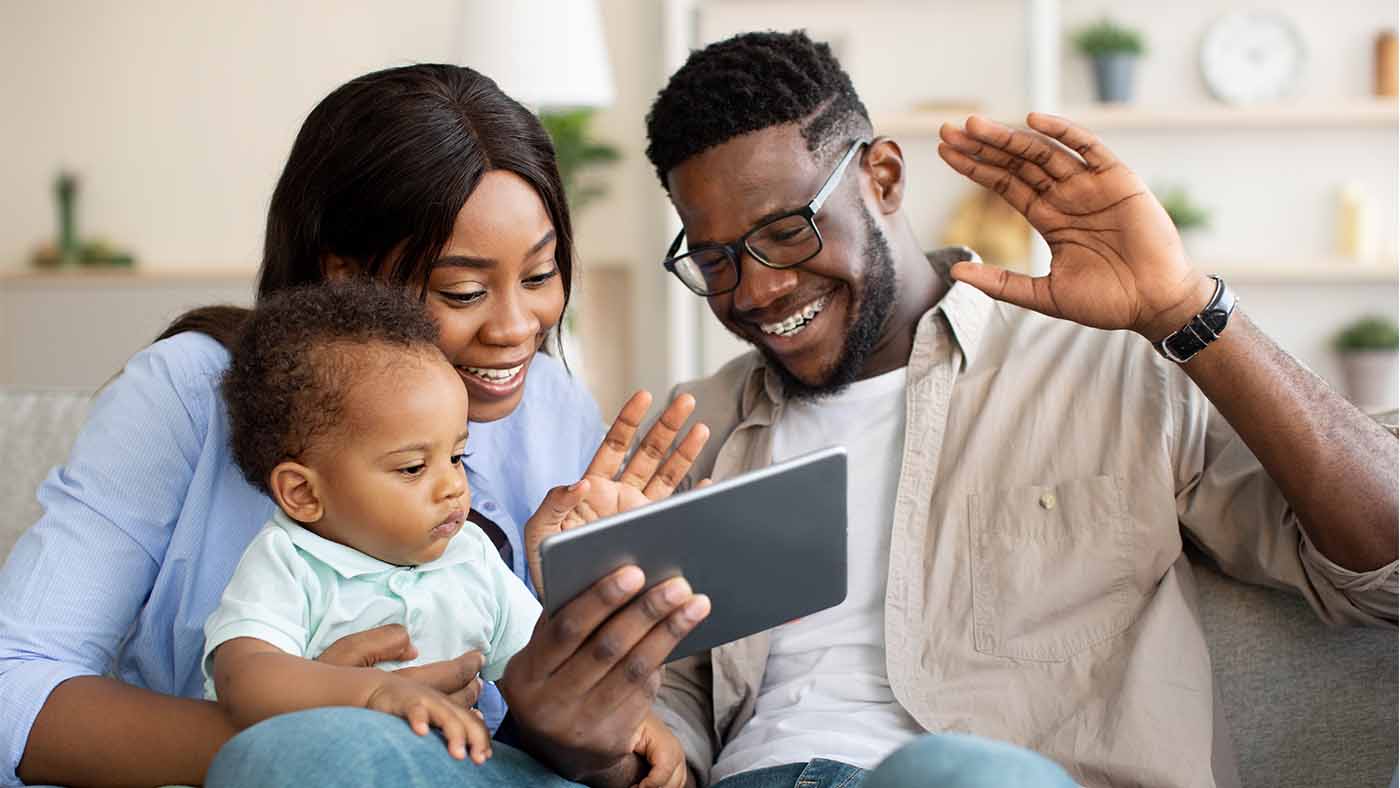More than words – helping your baby learn to talk

As your baby begins to show more interest in making sounds, it can be tempting to try to accelerate their progress to saying words. You might feel they need toys, flashcards or books that adverts tell you will help your baby to learn words more quickly. But, talking is about more than repeating words – it’s about understanding when you might use one word rather than another; when it might be time to chat (or not); when it’s your turn to speak in a conversation and how people use tone and pauses to change meaning. So, what’s your role in supporting all this amazing (and really quite complicated) development?
The answer is contingent interaction (much simpler than it sounds, honestly!)
You probably have contingent interactions with your baby many times a day. These are simply when you smile, talk and respond to your baby when you notice what they are interested in.
Research suggests this could be as simple as naming an object your baby has looked at within three seconds – you don’t need to set a timer – and this is what you’ll be doing when you chat and play with your baby.
Your baby will respond to your comments with a sound, smile or by looking at something else. When you respond to their reaction, again you are helping them to learn even more about conversations and language.
Number of turns rather than number of words
You might have seen headlines about the importance of the number of words babies and young children hear. Recently, scientists are beginning to think that what is important is the number of conversational turns they are involved in (a conversational turn is the number of times you and your baby take a turn when you chat). Your turn could be a few words and your baby’s turn could be a smile, sound or gesture; when you respond that is another turn, and so on.
Just as you don’t need a timer to check your responses are within three seconds, you don’t need to count turns – just be reassured that your chats with your baby are brilliant for their language development.
Not just face-to-face – interactions on video calls
The other amazing thing is that, although face-to-face is probably best as you can see what your baby is interested in and comment about that, video calls also seem to support language development if the person on the call responds to what your baby does. So, if your baby holds up their toy rabbit and they hear the other person say, “Oh, you have Rabbit!” your baby will make the link between the word and the toy.
While you might not want to invite your baby along to your next work meeting, if you have friends and family a bit further away, why not include your baby next time you have a video call?
Reference:
Masek, L.W., McMillan, B.T.M., Paterson, S.J., Tamis-LeMonda, C.S., Golinkoff, R.M., Hirsh-Pasek, K. (2021). ‘Where language meets attention: How contingent interactions promote learning’, Developmental Review, 60.